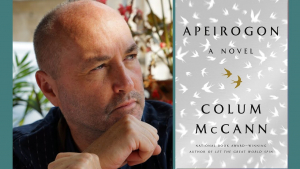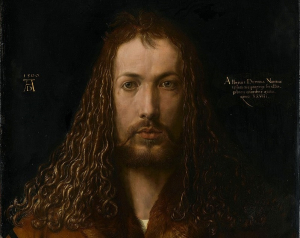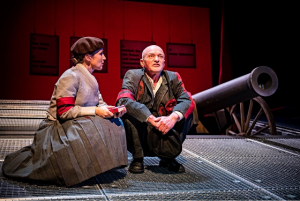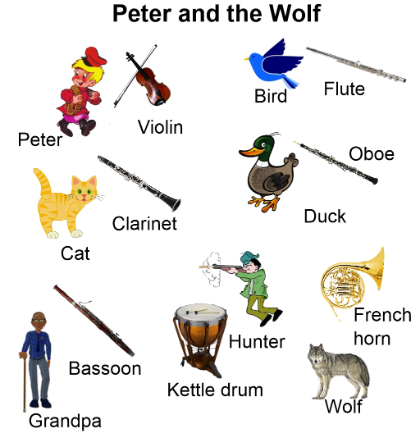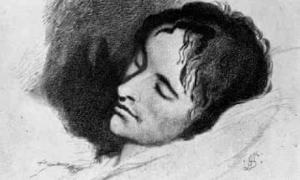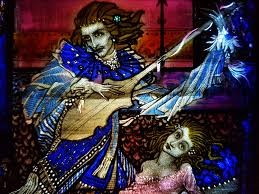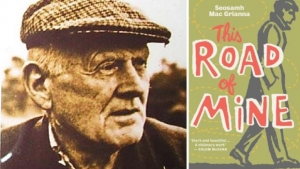
Walter Scott and the historical novel
On his 250th anniversary, Jenny Farrell writes about Walter Scott and his historical novels, uncovering themes of class conflict, ethnic and nationalist struggles, and how the personal experiences of his characters link with broader historical upheavals
History is vanishing from school curricula, and historical awareness is being deliberately erased. Novels in historical setting portray characters as unhistorical, no different to 21st century people, transporting a sense that people never develop, that society cannot and will not change. Such misrepresentation of the historical process fuels the sense that the world cannot be understood and any effort to change it for the better of humankind is ultimately futile. The history of literature shows that another kind of historical novel is possible, one that shows history as upheaval and people themselves as historical.
Walter Scott and the Historical Novel
Walter Scott was admired by his contemporaries Goethe, Pushkin and Balzac, and celebrated by Lukács as the founder of the historical novel. He was born in Edinburgh 250 years ago on 15 August 1771. Born into the upper middle class, his family preserved a sense of tradition from one of the great Scottish clans, including folk heritage. Like Robert Burns, Scott grew up with the songs and legends of Scotland. He collected them and reflected them in his own work. This cultural awareness was accompanied by a deep sense of national identity.
Scott read European literature of popular, patriotic spirit fluently and was familiar with the English realistic novel. He studied Scottish law and took a lively interest in the historical relations between Scotland and England. In 1797 he married Charlotte Carpenter of French royalist stock. Scott was a landowner and staunch Tory – yet his work goes beyond this.
Scott’s interest in Scottish border ballads led to his collection Minstrelsy of the Scottish Border (1802-03), in which he endeavoured to restore orally corrupted versions to their original wording. This publication made Scott known to a wide audience. His epic poem, The Lay of the Last Minstrel (1805), was followed by further lyrical romances. During these years Scott led a very active literary and social life. At the same time, he was deputy sheriff of Selkirkshire from 1799 and clerk of the court in Edinburgh from 1806, as well as part-owner of a printing press and later publishing house, which he saved from bankruptcy. Personal financial crises increasingly impacted on the course of his career and his writing became determined by the need to pay off debts. His estate in Abbotsford, furnished with many antiquarian objects, also consumed vast sums.
In 1813 Scott rediscovered the unfinished manuscript of a novel he had begun in 1805, which he rapidly finished in the early summer of 1814. This novel Waverley, about the Jacobite uprising of 1745, was enthusiastically received. Like all of Scott’s novels written before 1827, Waverley was published anonymously.
A born storyteller and master of dialogue in both Scots dialect and aristocratic etiquette, he was able to portray sensitively the whole range of Scottish society, from beggars and farm labourers to the bourgeoisie, the professions and the landowning aristocracy. Scott’s sensitivity to ordinary people was a new orientation. He convincingly portrayed outlandish highlanders as well as the political and religious conflicts that shook Scotland in the 17th and 18th centuries.
Scott’s masterpieces include Rob Roy (1817), The Heart of Midlothian (1818), and his most popular novel, Ivanhoe (1819).
Unfortunately, the haste with which he wrote his later books affected Scott’s health, as well as his writing. In 1827 his authorship of the Waverley novels became known. In 1831 his health deteriorated badly and he died on 21 September 1832.
Scott’s Times
Scott lived and wrote in an era of enormous upheaval – revolutions in France and North America, uprisings in Haiti and Ireland, the Napoleonic wars, the expansion of the British Empire and its domination of the seas, the slave trade, the uprooting of large sections of Britain’s peasantry through enclosure for the purpose of sheep farming, increasing capitalist “rationalisation” of the countryside, and large-scale highland clearances and evictions.

The beginnings of the Industrial Revolution consolidated the power of the bourgeoisie and the first political organisations of the working class emerged. Such density of dramatic events suddenly made the course of history, the progression from one society to another, directly tangible. History unfolded before everyone’s eyes and, it seemed, could be influenced. This is the shifting ground on which Scott’s historical novels are set.
In addition, literary production in Scotland and Ireland flourished. Here, on the colonial edges, questions of history and cultural identity, colonialism and anti-colonialism sharply crystallised. This begins in Ireland with Swift and his magnificent writings against British colonial power from the perspective of the Irish people as early as the 1720s. In Scott’s time, the Irish people speak in their idiom in Maria Edgeworth’s novels.
While England in the 18th century is preparing for the Industrial Revolution, politically it is already a post-revolutionary country, following the bourgeois English Revolution in the 1640s.
The emergence of the historical novel
As Georg Lukács argues convincingly in The Historical Novel, this genre emerges with Scott at this time. There had been novels with historical themes in the 17th and 18th centuries, but their characters and plots were taken from the time of the authors, who did not yet grasp their own epoch as historical. Scott’s novels introduce a new sense of history to the English realist novel tradition.
While Scott neither creates psychologically profound individuals nor reaches the level of the emerging bourgeois novel, he vividly embodies for the first time historical-social types. His main characters’ conflicts give artistic expression to social crises. The task of the protagonists is to find neutral ground on which the opponents can coexist. The main characters are usually tied to both camps. Pointing out a middle path is typical of Scott’s novels, and this is how his political conservatism is expressed.
For Scott, outstanding historical figures are representatives of a movement that encompasses large sections of the people. This passionate character unites various sides of this movement and embodies the aspirations of the people. Through Scott’s plot, readers understand how the crisis arose, how the division of the nation came about. It is against this background that the historical hero appears. The broad panorama of social struggles illuminates, as Lukács writes, how a particular time produces an heroic person, whose task it becomes to solve historically specific problems. These leaders, directly linked to the people, often overshadow the main characters. Historical authenticity is achieved through condensed dramatic events and the collision of opposites.
By interweaving personal fates of people with historical upheavals, Scott’s narrative is never abstract. Ruptures run between generations, between friends and affect them deeply in their personal lives. Scott’s great strength lies in the credible narration of human relationships in the context of their historical age.
Class struggles in feudal times – Ivanhoe
With Ivanhoe, Scott reaches far back into history. The novel is set around 1194, when the Norman Richard the Lionheart, King of England, Duke of Normandy and Count of Anjou, returns to England from his various adventures in the Crusades and from prisons in Austria and Germany. The Anglo-Saxon Ivanhoe, loyal knight in Richard’s army, also appears in England in disguise.
The central historical conflict of the novel is between the Anglo-Saxons of England and the Norman conquerors. The people are largely Anglo-Saxon, the feudal upper class are Norman. Parts of the Anglo-Saxon nobility, deprived of political and material power, still retain some aristocratic privileges and form the ideological and political centre of Anglo-Saxon national resistance to the Normans. Yet Scott shows how parts of the Anglo-Saxon nobility sink into apathy, while others await the opportunity to reach a compromise with the more moderate sections of the Norman nobility, which Richard the Lionheart represents.

When Ivanhoe, the title character and also a supporter of this compromise, disappears from the novel’s plot for some time and is overshadowed by secondary characters, this formal structure illuminates the historical-political reference to an absent compromise. The characters who overshadow Ivanhoe include his father, the Anglo-Saxon nobleman Cedric, unflinchingly insisting on anti-Norman positions, who even disinherits Ivanhoe because of his allegiance to Richard’s army, as well as his serfs, Gurth and Wamba.
Above all, however, this includes the leader of the armed resistance against Norman rule, the legendary Robin Hood. The true heroism with which the historical antagonisms are contested comes, with few exceptions, from “below”.
The folk figures are depicted with great vitality and nuance, while the antagonists tend to be stereotypes with little development. But neither does Ivanhoe change. Isaac the Jew is also stereotyped, although the same cannot be said of his daughter Rebecca, who captures the reader’s heart. Letters to Scott complained that Ivanhoe does not marry Rebecca at the end, but the comparatively pale Anglo-Saxon Rowenta. The author rejected such an ending as historically indefensible.
Scott proves himself here once again to be a defender of the middle road. The future belongs to Ivanhoe, knight in the service of the moderate Norman Richard the Lionheart and son of the anti-Norman Anglo-Saxon Cedric. His marriage to Rowenta points to this middle ground.
Scott, in depicting historical conflict in the lives of the people, shows the energies ignited in the people by such crises. Consciously or unconsciously, as Georg Lukács notes, the experience of the French Revolution is in the background.
The defeat of clan-based society – Rob Roy
Published in 1817, this novel is, along with Ivanhoe, among Scott’s most famous. Written in 1816, practically 100 years after the events it describes – the first Jacobite uprising of 1715 – the aim of the Jacobite uprisings was to restore the Catholic Stuart dynasty and Scottish independence. At the same time, Scott sketches the Gaelic-speaking Highland Scots as still living in clans, especially in the character of Rob Roy MacGregor. In this character, Scott creates a genuine folk hero with a passionate humanity that lends heroic traits to this clan society. Rob Roy is nevertheless an individualised character, initially in disguise, a constant presence and also a benchmark of heroism in this novel. Not only is he a centre of passion in the novel, his language is deeply poetic. In this way the reader experiences the failure of the rising and the defeat of clan society as a tragic event.

Typically for Scott, Rob Roy is not the novel’s main character. That is the narrator Frank Osbaldistone, son of a London merchant who refuses to join his father’s successful business and is sent to live with his uncle in Northumberland, on the border with Scotland. Instead of him, cousin Rashleigh enters the business. When the latter steals money and disappears with it to Scotland, Frank follows him and so meets MacGregor.
This English narrator takes the neutral place, the common ground – Osbaldistone’s family lives on the Scottish border. At the end of the plot he marries his Catholic cousin, Diana Vernon, who is closely associated with the Jacobins, thereby achieving the union between Presbyterians and Catholics envisaged by Scott. Vernon is a confident woman as is the indomitable Helen MacGregor. Both are highly intelligent people who are in complete command of their scenes.
It is also important that Scott writes his extensive dialogue scenes in Scots dialect. This establishes a bond between characters and Scottish readers. Before him Robert Burns had also written in the vernacular. To this day, this dialect establishes identification with ordinary Scots, as underlined by the two Scottish Man Booker prize winners (James Kelman and Douglas Stuart). Scott even ventures into Gaelic, translating these short expressions for the reader. Scott’s numerous annotations are culturally and historically enlightening.
Class and ethnic conflict – The Heart of Midlothian
The novel following Rob Roy, The Heart of Midlothian, is set over 20 years later, in 1736/37. Midlothian is an historic county with Edinburgh as its capital; the Heart of Midlothian, however, is its prison. The novel opens with the Porteous riots. Porteous, Captain of the City Watch ordered his men to bloodily suppress a riot during a public execution in the Grassmarket in Edinburgh in April 1736. He was lynched by the angry crowd for killing innocent civilians.
As Arnold Kettle has noted, Scott unfolds a large social spectrum here, ranging from the urban underworld to the Queen. At the centre is Jeanie Deans, from a rural, puritan background who speaks in Lowland Scots. This young peasant woman is perhaps Scott’s greatest female character. Her unmarried sister Effie is accused of infanticide. Merely keeping a pregnancy secret was punishable by death under Scottish law at the time. Forced to conceal the birth to protect her father, Effie insists that she has not harmed the new-born. Despite great empathy for her sister’s fate, Jeanie’s puritan conscience forbids her to commit perjury that could save her sister. This is simply historically true and not modernised. Effie is sentenced to death and the penniless Jeanie sets off for London to seek a pardon from the Queen.

The trial is the central event, revealing clashing values and worlds, the conflict between David Dean’s old rural world and the world of the modern money centred city. Jeanie’s struggle to save her sister reveals her deep humanity and courage. It shows that in crisis situations a heroism can burst forth in ordinary people that is not visible in everyday life and of which people themselves are often not even aware. She proves what strength and heroism there is in the people when the situation calls for it, as it happens time and again in history. Scott brings history to life with such a portrayal of human resilience in a specific historical situation.
Scott’s hallmark is depicting personal experience as part of history. Readers encounter an outraged people in the Porteous Riots. Scott conveys the genuine conflict between the people and the guards, as well as the bitter hostility of the Scots towards the English state. The events clearly involve more than seduction and rescue.
The second half of the novel is less successful, as Scott depicts the world not from the peasants’ point of view, but from that of the romanticised landowner, precluding realism. Parallel to the central conflict between city and country runs that between Scotland and England. Scott’s Edinburgh is not a random setting, but a Scottish city in a concrete historical situation.
Scott’s characters are never outside their time. He reflects the complex relationship between personal and social forces in a person’s life. With his portrayal of historically specific circumstances and the vitality of his ordinary people, Scott prepares the ground for Dickens. Dickens, who came from the impoverished petty bourgeoisie, would a little later make the ordinary people of London the heroes and heroines of his novels.



